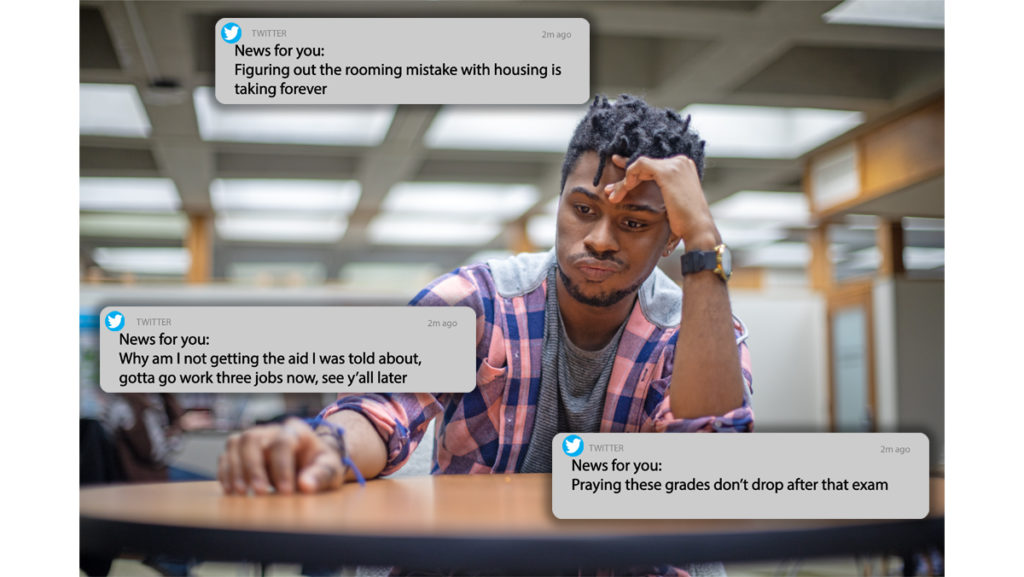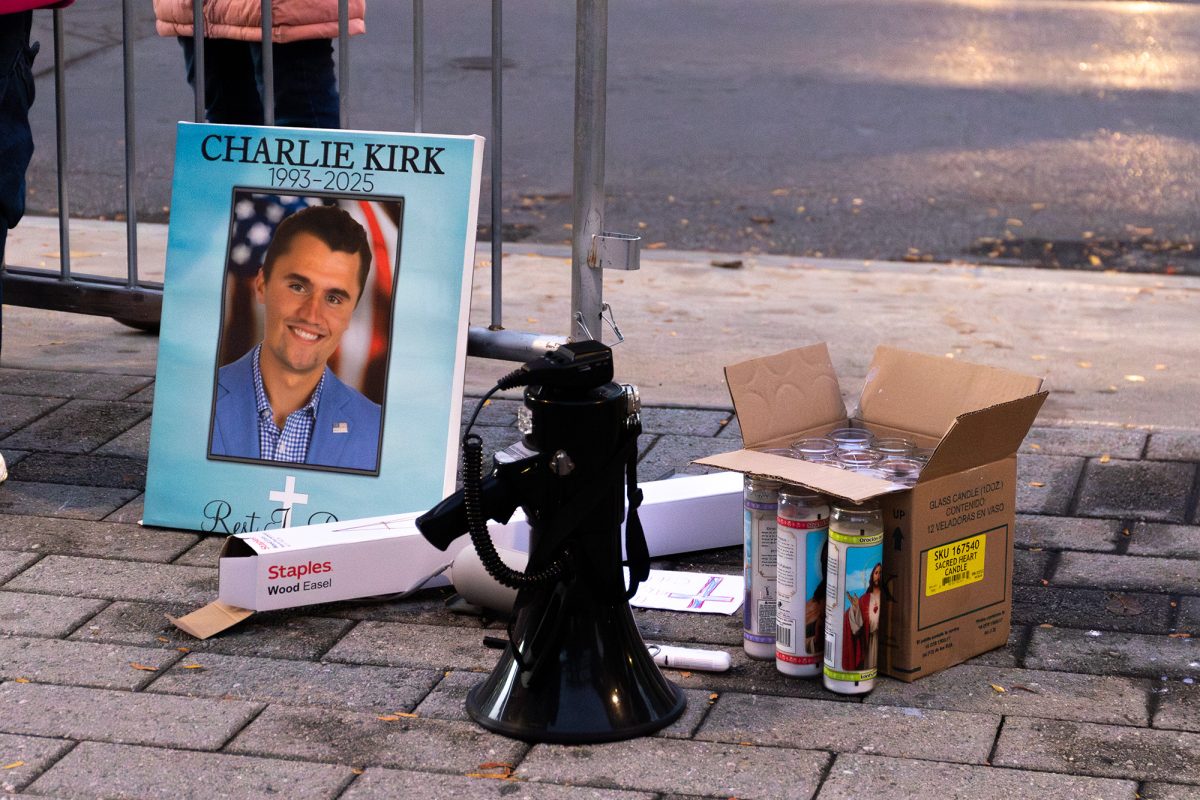A study from Preply, a foreign language tutoring platform, ranked the City of Ithaca as the 10th most stressed–out college town after analyzing tweets from students in different college towns in the United States. However, some students and staff at Ithaca College wonder if it is accurate in detecting students’ stress levels.
North Star Inbound, a content marketing agency, worked with Preply on this study and gathered tweets from 150 geolocations across the country from Aug. 1 to Oct. 31, 2022. North Star Inbound used a tool called TensiStrength, which is a system that analyzes words and phrases to detect the amount of stress in a small message. Once a message is typed into the system, a score is generated from a scale of -1, which indicates no stress, to -5, which means a high level of stress. A positive analysis of a tweet begins on the lower end at 1 to a scale of 5 for tweets indicating a high level of positivity.
Afterward, North Star Inbound narrowed the list of college towns to ones where there is at least one major higher-education institution with students that made up 30% or more of the total population in the town or city.
Matt Zajechowski, director of Media Relations at North Star Inbound, said he and his team wanted to analyze language through social media. Additionally, Zajechowski said he wanted to examine student stress in a medium where college students are most active. However, according to Hootsuite, Twitter is listed as the 15th most used social media platform, just above Reddit and Quora. Also, according to the Pew Research Center, among people aged 18–29, 70% use Facebook, 71% use Instagram and 42% use Twitter.
“We liked the medium that Twitter was restricted to, which is 160 characters,” Zajechowski said. “So, it kind of gave us a short log into what someone’s feeling, as opposed to some of these other platforms.”
The rankings were based on the percentage of tweets indicating stress coming from the selected college towns. According to the data from the study, 29.1% of tweets indicating stress came from the Town and City of Ithaca, which is home to Ithaca College and Cornell University. Berkeley, California, holds the top ranking with 42.7% of students expressing stress, while West Lafayette, Indiana, had the lowest percentage of tweets indicating stress with 15% of students from Purdue University expressing stress on Twitter.
The University of California was the only college from Berkeley that was analyzed, despite the city being home to colleges like Berkeley City College and The Wright Institute.
Zajechowski said 60% of the tweets from students in college towns across the country were about finance, housing and academic stress.
According to the 2022 National College Health Assessment, 44.4% of Ithaca College students reported academic stress in the 12 months before the survey was conducted — February to March 2022 — and 47.8% of the college students reported experiencing financial issues.
“We talked about finances and housing, but think about all these other factors that go into being a college student, “ Zajechowski said. “You’re meeting new people and a lot of people are away from their homes for the first time, whether it’s somewhere where they’re attending locally or if they’re moving across the country.”
Furthermore, Zajechowki said that while the use of TensiStrength made it easier to analyze tweets, he said he is aware of some of the flaws in the system.
“I think [TensiStrength] gave us a nice baseline because we could put in these large amounts of text in there, and it would then plop out a percentage,” Zajechowki said. “Do I think it’s a perfect system? No, I mean, it’s machine learning. I think there are some things where it may detect something being stressed where that might not be a perfect fit for that, but by and large, I think it was definitely helpful and as trustworthy as machine learning can be.”
After reading the study, Michelle Goode, program director of the Ithaca College Center for Health Promotion, said she disliked how the study framed stress as just a negative aspect of life.
“Everyone experiences stress,” Goode said. “So, I think it’s important for us to make sure that’s normalized like we don’t want to say experiencing stress is abnormal because it’s part of the human experience. For me, when I think about stress, I think it’s not necessarily if you have stress because we all do.”
Brian Petersen, director of the Counseling and Psychological Services (CAPS), said Zajechowski and his team could have gone deeper into some of the study’s findings in order to help college students with stress. Petersen said he was a part of a Facebook initiative at Pace University that was trying to address suicidal concerns on the platform eight years ago.
“I don’t think social media is evil, but it is how you use it,” Petersen said. “One of the problems with this study is that there is no depth to it. It’s basically surface level and methodology; you can’t call it a scientific survey.”
Junior Heaven Cuevas said she views Twitter as a tool for students to vent out their frustrations during midterms and finals week. Furthermore, Cuevas said the study could have focused on stress during finals week for more effective results.
“I feel like [studying tweets] isn’t necessarily the best tactic,” Cuevas said. “Because although people do post statuses based on how they are feeling, it’s also a very popular app. Generally during finals week or midterm week that topic will be a trending conversation at the time, so being that this is a social media site, a lot of people also post tweets that are going to get noticed. Just because people tweet about it doesn’t necessarily mean they are going through it, which is why I think this study in addition to another one [that has more specificity] would be a greater proof of actual stress levels in college towns.”
Senior Justin Foster said he avidly uses Twitter to scroll through memes and tweets. Foster said some tweets can be sarcastic even though there may be language that can allude to stress.
“I think Twitter is something that many people use, especially in college,” Foster said. “With Twitter, we’re able to voice opinions that we don’t say in real life. There are definitely a lot of things that should probably be worked out as far as really figuring out who is stressed and are they genuinely stressed.”
Petersen said studies using social media to assess students’ stress can be done, but in a way that is more effective.
“If they frame it correctly, okay, no problem, but the issue with stuff like this is what people do with it, ” Petersen said. “So right now the story is these are the 10 most stressed-out colleges in America and there’s no pushback against that. It’s just the headline assumes much more than the data proves.”
Correction: A previous version of this article stated that Purdue University was the only college to be analyzed in West Lafayette, even though Franklin University and Wabash College are also in the city. However, Franklin College is in Franklin, Indiana, and Wabash College is in Crawfordsville, Indiana.







